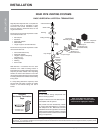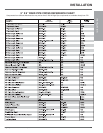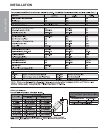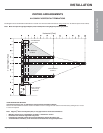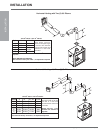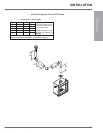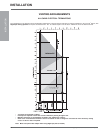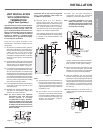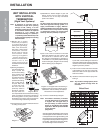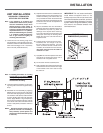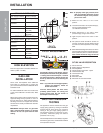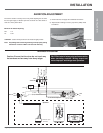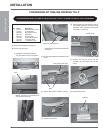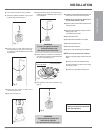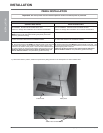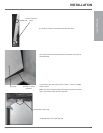
Regency® L676S Direct Vent Gas Fireplace
26
INSTALLATION
INSTALLATION
6) Continue to assemble pipe lengths.
Note: If an off set is necessary in the attic
to avoid obstructions, it is important
to support the vent pipe every 3
feet (0.9 meter), to avoid excessive
stress on the elbows, and possible
separation. Wall straps are available
for this purpose
(Diagram 2).
Galvanized pipe is desirable above the roofl ine
due to its higher corrosion resistance. Continue
to add pipe sections through the fl ashing until
the height of the vent cap meets the minimum
height requirements specifi ed in Diagram 5 or
local codes. Note that for steep roof pitches,
the vertical height must be increased.
Diagram 3
Note:
For best results and optimum performance
with each approved venting system, it is
highly recommended to apply “Mill-Pac”
sealant (supplied) to every inner pipe connec-
tion. Failure to do so may result in drafting
or performance issues not covered under
warranty. Silicone (red RTV) is optional.
UNIT INSTALLATION
WITH VERTICAL
TERMINATION
(Rigid Vent Systems)
Note: A clearance of 2"(51mm) must be
maintained; except when passing
through a wall, ceiling, or at the
termination where the use of a fi restop
or wall thimble reduces the required
clearance to 1-1/2" (38mm). We
recommend framing a 11"(279mm) x
11"(279mm) (inside dimensions) hole
to give structural rigidity for mounting
the termination.
1) Maintain the 2" (51mm)
clearances (air spaces)
to combustibles when
passing through ceilings,
walls, roofs, enclosures,
attic rafter, or other nearby
combustible surfaces.
Do not pack air spaces
with insulation. Check
"Venting Arrangement
- Vertical Termination"
section for the maximum
vertical rise of the
venting system and the
maximum horizontal offset
limitations.
2) Set the gas appliance
in its desired location.
Drop a plumb bob
down from the ceiling
to the position of the
appliance fl ue exit,
and mark the location
where the vent will
penetrate the ceiling.
Drill a small hole at
his point. Next, drop
a plumb bob from
the roof to the hole
previously drilled in
the ceiling, and mark
the spot where the
vent will penetrate the roof. Determine if ceiling
joists, roof rafters or other framing will obstruct
the venting system. You may wish to relocate
the appliance or to offset, as shown in Diagram
2 to avoid cutting load bearing members.
3) A Firestop spacer must be installed in the fl oor
or ceiling of every level.
4) Assemble the desired lengths of pipe and
elbows. Ensure that all pipes and elbow
connections are in the fully twist-locked
position and sealed.
Diagram 4: The upper half of the fl ashing is
installed under the roofi ng material and not
nailed down until the chimney is installed.
This allows for small adjustments.
5) Cut a hole in the roof centered on the small
drilled hole placed in the roof in Step 2. The
hole should be of suffi cient size to meet
the minimum requirements for clearance to
combustibles of 1-1/2"(38mm). Slip the fl ashing
under the shingles (shingles should overlap
half the fl ashing) as per Diagram 4.
Off set Chart
A poor draft, or down drafting can result from
high wind conditions near big trees or adjoining
roof lines, in these cases, increasing the vent
height may solve the problem.
7) Ensure vent is vertical and secure the base
of the fl ashing to the roof with roofi ng rails,
slide storm collar over the pipe section and
seal with a mastic.
8) Install the vertical termination cap by twist-
locking it.
Note: Any closets or storage spaces, which
the vent passes through must be
enclosed.
Diagram 5
Roof Pitch
Minimum Vent
Height
Feet Meters
fl at to 7/12 2 0.61
over 7/12 to 8/12 2 0.61
over 8/12 to 9/12 2 0.61
over 9/12 to 10/12 2.5 0.76
over 10/12 to 11/12 3.25 0.99
over 11/12 to 12/12 4 1.22
over 12/12 to 14/12 5 1.52
over 14/12 to 16/12 6 1.83
over 16/12 to 18/12 7 2.13
Diagram 2
Diagram 1



